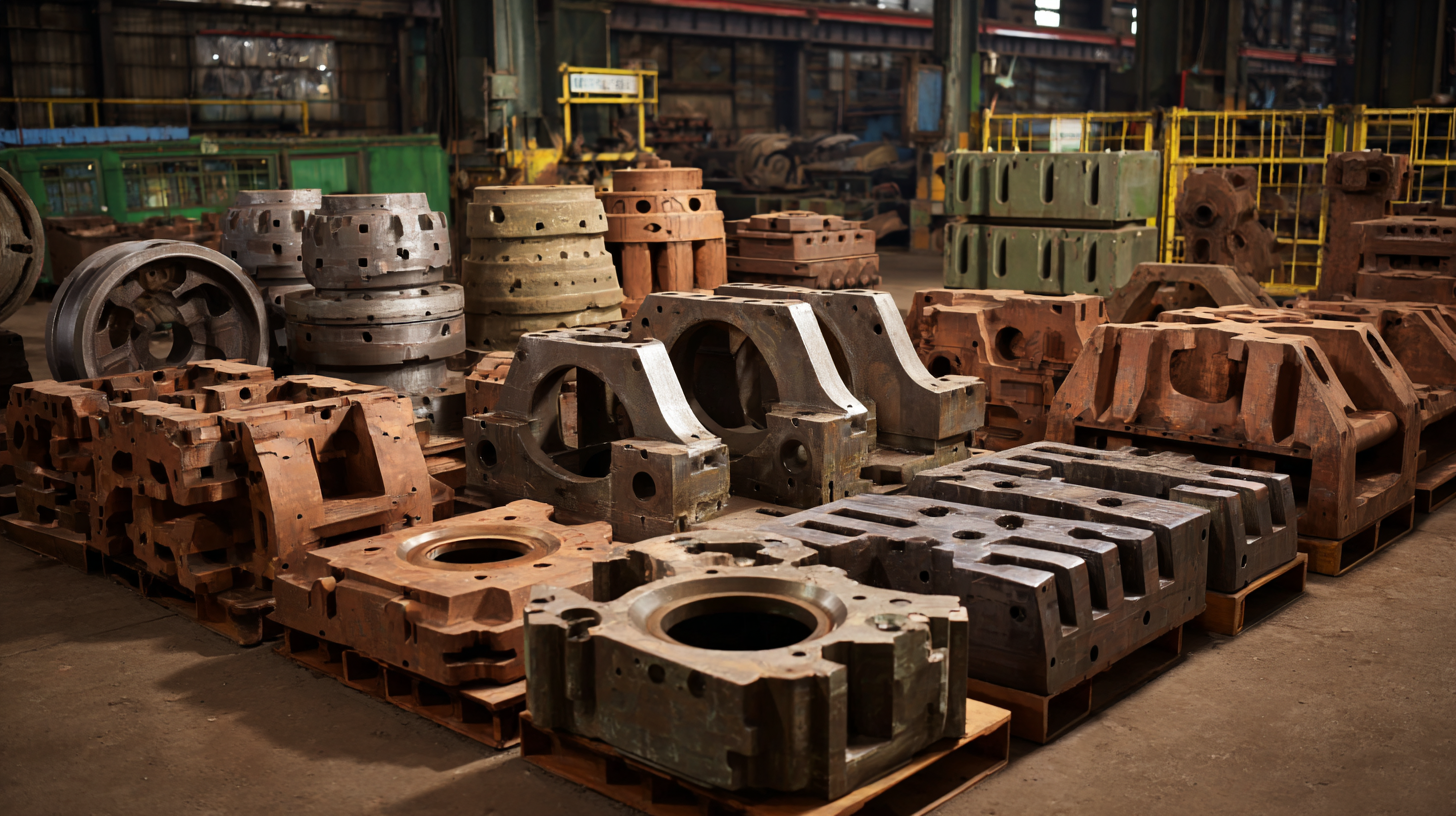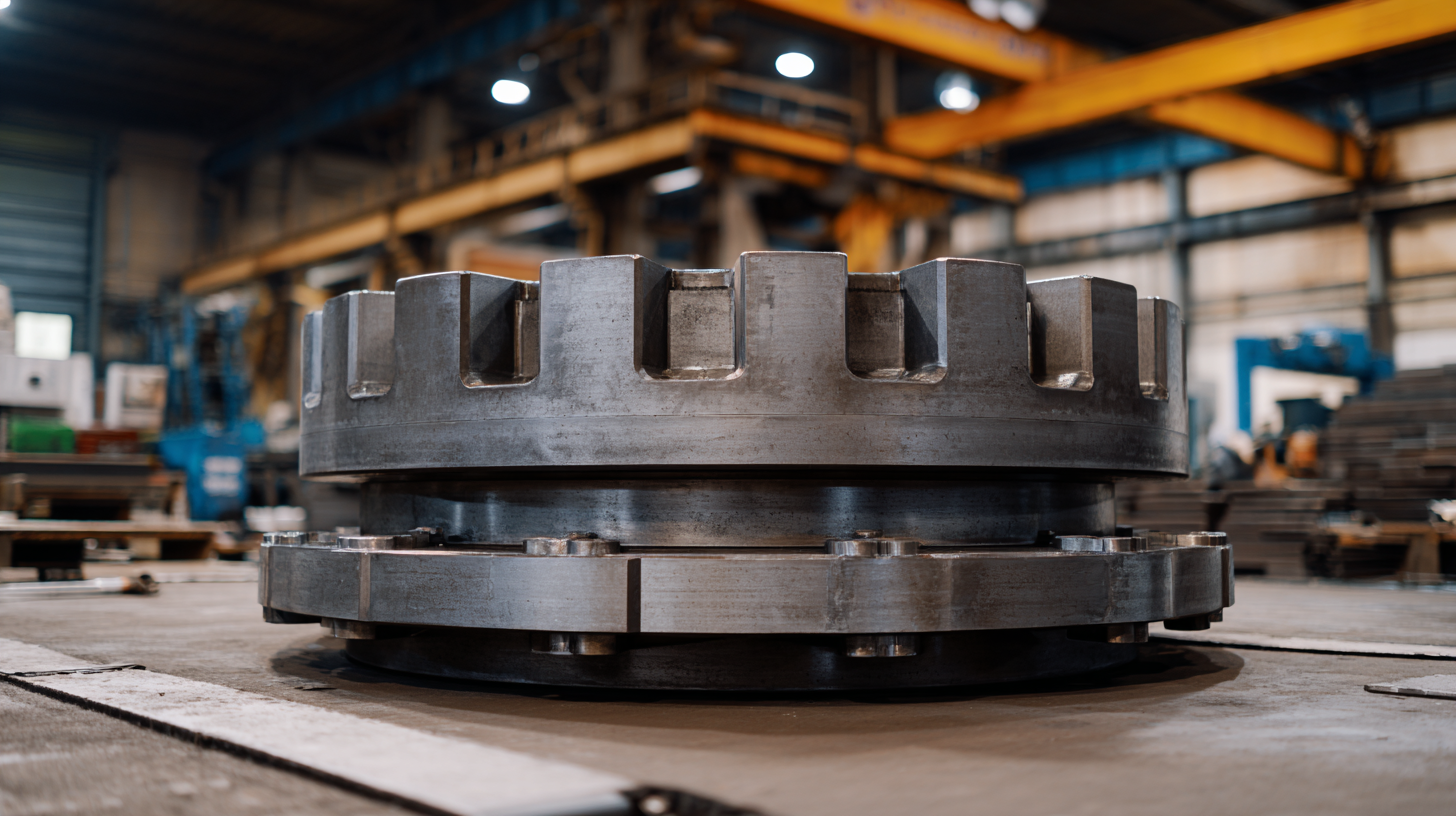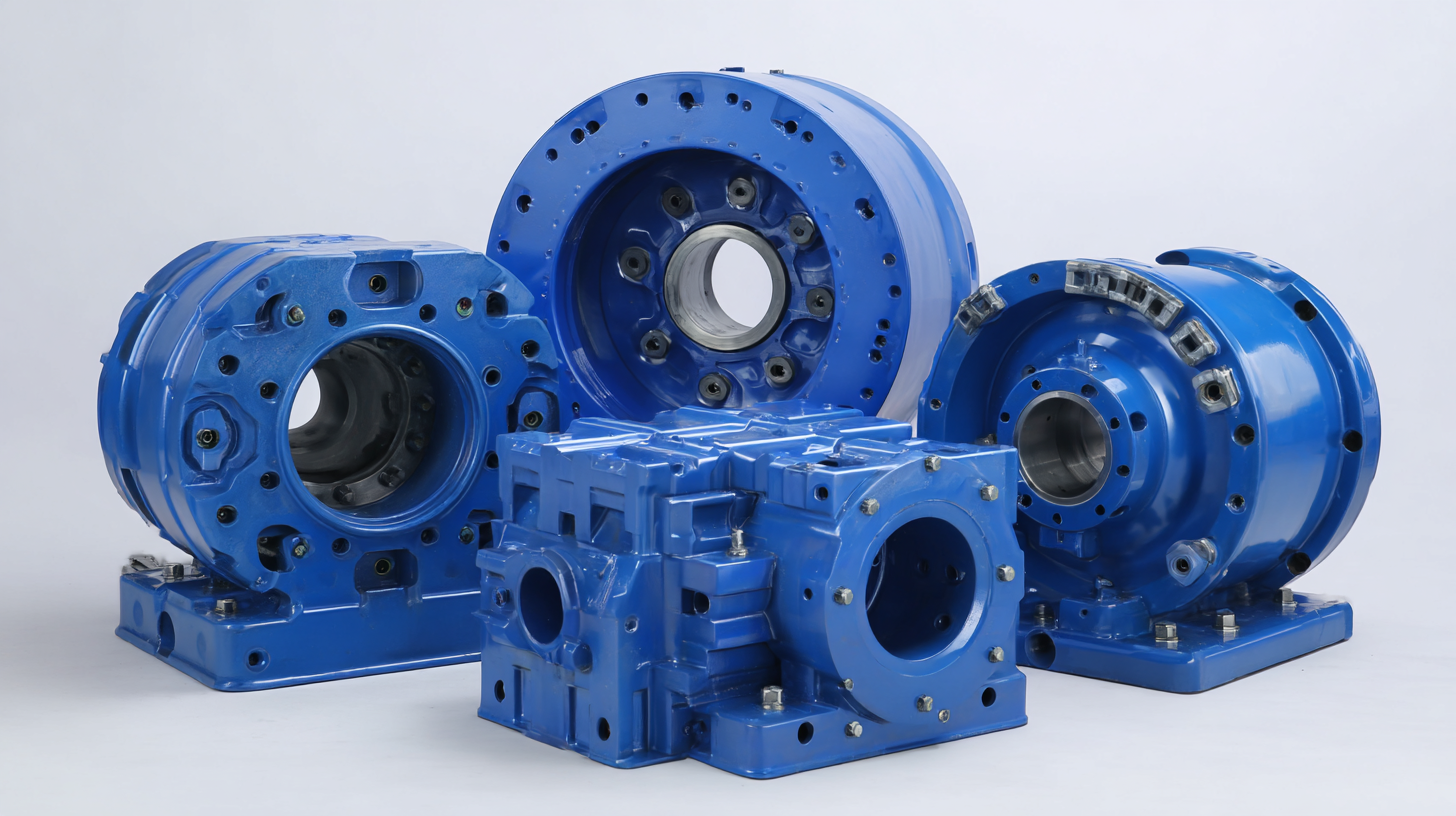
-
Home
-
About Us
-
Products
-
News
-
Blog
-
Contact Us
Leave Your Message

In recent years, the demand for high-quality Jaw Crusher Parts has surged, driven by the increasing growth of the global construction and mining industries. According to a report by MarketWatch, the global jaw crusher market was valued at approximately $1.3 billion in 2020 and is projected to reach $2 billion by 2025, with a compound annual growth rate (CAGR) of 8.0%. China, as a leading manufacturer, is revolutionizing this sector by providing premium parts that meet international quality standards, thereby setting the benchmark for excellence. This blog will explore the transformative impact of Chinese Jaw Crusher Parts on global markets, delving into market trends, future projections, and practical insights on how businesses can leverage this evolution to enhance their operations. As we navigate the landscape of industry innovations, it becomes essential to understand how these advancements will shape the future of construction and mining equipment.

The global market for crushing equipment has been significantly impacted by the introduction of premium jaw crusher parts from China. These high-quality components are redefining efficiency and durability standards, catering to industries ranging from mining to construction. As manufacturers increasingly seek reliable and cost-effective solutions, China’s premium offerings are positioning themselves as key players in the competitive landscape. The result is a positive shift in supply chain dynamics, where enhanced performance of these parts leads to lower operational costs and increased productivity across various sectors.
Moreover, the innovation within Chinese manufacturing has spurred a wave of technological advancement. This has not only improved the overall quality of jaw crusher parts but has also influenced global pricing strategies. As companies adopt premium components, they are benefiting from reduced downtime and extended equipment lifespans. This trend is fostering a more interconnected market environment where quality assurance and cutting-edge engineering from China set a new benchmark for manufacturing standards worldwide, compelling other producers to elevate their offerings or risk obsolescence in a rapidly evolving industry.
The decision to import jaw crusher parts from China versus sourcing them locally involves an intricate analysis of the cost-benefit ratio. On one hand, imported parts often boast superior quality and specific advancements in technology, which can enhance the efficiency and performance of mining operations. These premium parts can reduce downtime due to their durability and precise engineering, ultimately leading to a higher return on investment. However, the upfront costs associated with shipping and tariffs can make these imports less appealing in terms of immediate expenses.
Conversely, local suppliers may offer a more competitive pricing structure and reduced lead times, which can be advantageous for companies aiming for quick repairs or replacements. However, the quality of locally sourced parts might not always match that of high-end imported alternatives, potentially leading to more frequent failures and increased long-term operational costs. Companies must weigh these factors carefully, considering not only the price but also the long-term implications on productivity and equipment longevity when making their decision.
 The shift towards high-quality crusher components mirrors broader trends across various industries, as businesses increasingly prioritize durability and performance in their operations. In a climate where online sales dominate markets like the pet industry, consumers are gravitating towards products that offer the best value. This emphasis on quality is evident in the premium jaw crusher parts emerging from China, setting new standards in the global marketplace. As companies align with high-end offerings, the demand for reliable and efficient components is surging, shaping supplier decisions and driving innovation in product development.
The shift towards high-quality crusher components mirrors broader trends across various industries, as businesses increasingly prioritize durability and performance in their operations. In a climate where online sales dominate markets like the pet industry, consumers are gravitating towards products that offer the best value. This emphasis on quality is evident in the premium jaw crusher parts emerging from China, setting new standards in the global marketplace. As companies align with high-end offerings, the demand for reliable and efficient components is surging, shaping supplier decisions and driving innovation in product development.
Moreover, similar to the automotive parts manufacturing sector, where projections indicate significant growth fueled by advancements in technology and consumer preferences, the market for premium crusher components is poised for expansion. As manufacturers focus on enhancing their product lines to meet these emerging demands, we can expect to see a trend towards enhanced quality control and more sustainable production practices. This evolution not only benefits the end-users but also strengthens the overall industry, fostering a competitive landscape that prioritizes excellence and customer satisfaction.
The future of crusher parts is not just about functionality; it’s about setting benchmarks in quality that resonate with today's discerning buyers.
The jaw crusher market has seen significant shifts, particularly with the rise of Chinese manufacturers. According to a recent report by Global Industry Analysts, the global jaw crusher market is projected to reach USD 2.28 billion by 2026, with Asia-Pacific regions, especially China, leading the charge in production and innovation. Chinese manufacturers, leveraging advanced technology and cost-effective production methods, are not only driving down prices but also enhancing the quality and durability of jaw crusher parts.

Moreover, these manufacturers are increasingly focusing on research and development to set industry standards. The latest market analysis indicates that the quality of jaw crusher parts produced in China has improved dramatically, with many companies investing in high-grade materials and precision engineering. As such, Chinese-made jaw crusher parts now comply with international standards, making them highly competitive in global markets. This shift not only benefits domestic industries but also impacts global supply chains, as more companies seek reliable, high-performance components from China to meet their operational needs.
The jaw crusher parts market is poised for significant growth, with projections indicating a compound annual growth rate (CAGR) of approximately 4.8% from 2020 to 2025. This surge in demand can be primarily attributed to the escalating need for construction and mining activities across various regions, particularly in developing countries. A recent industry report highlights that Asia-Pacific will dominate the market, accounting for over 45% of the total share due to rapid urbanization and infrastructure development.
Moreover, advancements in materials and technology are also influencing the market trajectory. High-quality premium parts sourced from China are increasingly recognized for their durability and efficiency, which are essential in high-demand applications. As manufacturers continue to innovate, offering enhanced wear resistance and reduced downtime, the global market for jaw crusher parts is not just expanding but evolving. According to insights from industry analysts, by 2025, the revenue generated from jaw crusher parts is expected to exceed USD 1.2 billion, showcasing the critical role these components play in sustaining the machinery that drives our infrastructure and mining sectors.
| Region | Market Size (2022, USD Billion) | Projected Growth Rate (CAGR 2023-2025) | Key Drivers | Challenges |
|---|---|---|---|---|
| North America | 2.5 | 4.5% | Increased infrastructure spending | Regulatory challenges |
| Europe | 1.8 | 3.8% | Sustainable construction practices | High competition |
| Asia-Pacific | 3.0 | 6.2% | Rapid urbanization | Economic fluctuations |
| Latin America | 1.0 | 5.0% | Mining sector expansion | Political instability |
| Middle East & Africa | 0.8 | 4.0% | Infrastructure development | Limited resources |